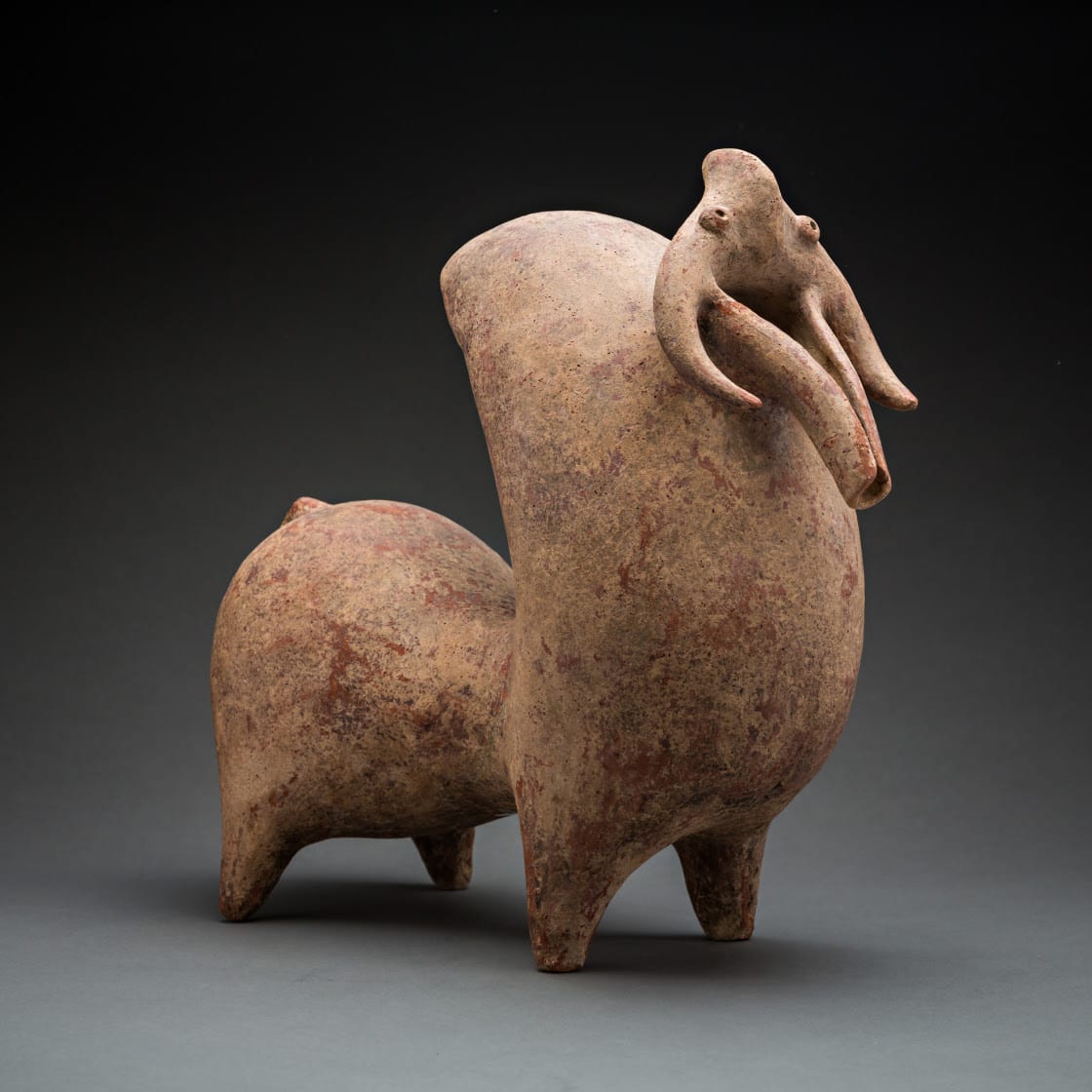Amlash Terracotta Vessel in the Form of a Zebubull, 1200 BCE - 800 BCE
Terracotta
35.6 x 20.3 x 45.7 cm
14 1/8 x 8 x 18 in
14 1/8 x 8 x 18 in
JL.13
The Amlash culture is known almost exclusively through the archaeological material that has emerged in recent decades. We know little about the people themselves, other than the fact that they...
The Amlash culture is known almost exclusively through the archaeological material that has emerged in recent decades. We know little about the people themselves, other than the fact that they were highly skilled artists and artisans. Otherwise, it appears that this ancient culture once inhabited the mountainous regions bordering the Caspian Sea in the north of modern day Iran. According to the archaeological record, their culture appeared to reach its plateau during the 9th and 8th Centuries B.C. Although we are uncertain whether the population was native to the land or migrated from border regions, the subject matter of their art and pottery, which characteristically include themes relating to nature, is clearly linked to the art of their contemporary neighbors including the cultures of Luristan and Elam.
This strikingly modern terracotta sculpture of a bull could just have easily been made by a 20th century master as the ancient Amlash artisan who crafted it many centuries ago. Standing tall on four legs, with a swooping neck that flows into the head, this bull is not merely sculptural but also functional. A spout emerges from the head, under which are incised two little eyes. Horns curve outwards from the place where the spout and the head merge. The weight of the front is balanced in the rear by a prominent rump
This strikingly modern terracotta sculpture of a bull could just have easily been made by a 20th century master as the ancient Amlash artisan who crafted it many centuries ago. Standing tall on four legs, with a swooping neck that flows into the head, this bull is not merely sculptural but also functional. A spout emerges from the head, under which are incised two little eyes. Horns curve outwards from the place where the spout and the head merge. The weight of the front is balanced in the rear by a prominent rump
